The passenger case for electric planes
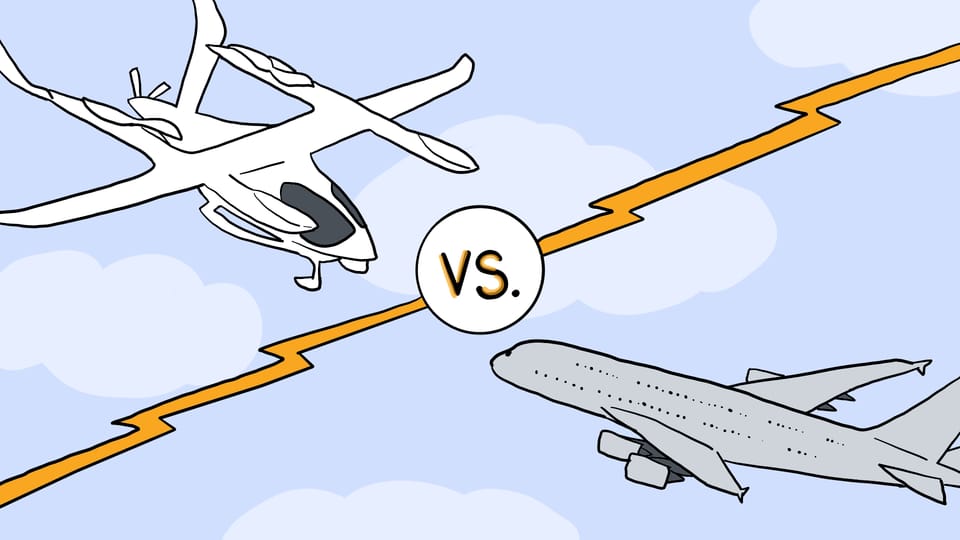
In case you missed it, read last week's intro post to electric aviation here.
The quietest place on Earth isn't "my bedroom", thank you very much, but a room in a lab in Minnesota. Technically an anechoic chamber, this space is so silent its volume can be measured in negative decibels, i.e. below the threshold of human hearing.
With no external noise to hone in on, a person standing in the chamber will direct their hearing inwards. They'll hear the blood coursing through their veins. Hear the compression of their lungs. Hear themselves blink. Most people can only handle being in the chamber for a few minutes before they start to freak the eff out.

Now, electric planes aren't that quiet. But they are lightyears quieter than the jet fuel-powered alternative. That's because, unlike Internal Combustion Engines (ICE), electric motors are made with relatively few moving parts. They don't require constant explosions of gas and air to produce power, either. Consequently, electric planes have no need for exhaust fans, as they do not create exhaust. And all of this means they vibrate and shake much less than what we're used to.
One study found an electric plane produced 100x less noise energy than a gas-combusting predecessor.
How might this impact you, the humble airline passenger on a business trip to Toledo? Well, in our all-electric aviation future, it'll mean you won't need subtitles taking up a third of the screen on your in-flight movie. You'll be able to hear every note of La La Land just fine.
A quieter, less shaky plane ride—and far less noise pollution for communities near airports—is just one perk of electric aviation. Let's talk about some others.
Electric planes are safer than gas planes
For any new technology, there's an understandable tendency on the part of the consumer towards caution and even skepticism. Gas planes are all we've ever known. They (mostly) don't fall out of the sky. Whereas a "battery-powered plane" sounds more like an expensive toy that your kid is guaranteed to destroy within an hour of opening the box than something you'd voluntarily strap your frail human body into.
What if the battery dies, for instance? Or what if that newfangled electric motor craps out? What then, huh?! We're goners, man!!
The thing is, the bright minds at Beta Technologies designing and constructing these aircraft have heard your fears. They have parents, too, you know. So they build their planes and eVTOLs to be extra super safe.
Five separate batteries
"What if the battery fails?"
If a Beta aircraft's battery were to die mid-flight for some inexplicable reason, it doesn't matter.
Every Beta aircraft is equipped with five separate batteries, each of which is individually configurable and can perform all the functions of the aircraft. Beta has architected their aircraft in such a way that the system will stay on even if a battery fails. The probability that all five batteries fail during a flight is astronomically low.
In the highly improbable event that one of the batteries catches fire, know that the battery cells are containerized and isolated within the aircraft, so the fire cannot spread. Battery safety via isolation is one of the many painful but important lessons we have learned from the oft-cited Moss Landing battery fire disaster. Here are some other lessons we've learned, if you're nervous about having more big batteries power your life.
Electric planes are heavily regulated
Remember regulation? You know, the imposing of rules for the health and safety of the greater good? Despite mounting evidence to the contrary, some American industries are still heavily regulated. Aviation is one of them.
Electric aircraft are regulated by the FAA just like gas-burning planes. They're not allowed to use up all their "fuel" during a flight: they're required to always carry 100 miles of "extra" battery power in case of emergency situations.
In the (again) almost statistically impossible event that all five batteries fail, Beta's aircraft happen to be phenomenal gliders, per CEO Kyle Clark, due to their very high lift over drag ratio. Clark routinely powers off his electric plane for the last 15 minutes of his flight and landing, just to demonstrate its effectiveness as a glider.
Electric engines are simpler and more powerful than gas engines
"What if the engine fails?"
Beta has supersized their two motors such that if one fails, the aircraft can still climb higher. This is decidedly not the case with ICE planes, where motor trouble means you better start looking for a flat patch of grass to land on ASAP.
Of course, the other advantage of having two jumbo-sized motors is that, when everything's operating properly, you can generate a tremendous amount of torque.
Ever driven an electric vehicle? Perhaps you've probably experienced the warp speed feeling of punching it. I hate to give them credit, but the Tesla Model S Plaid can hit 0-60 mph in just 2 seconds. That's as fast (or faster) than a whole Jay Leno garage's worth of multi-million dollar sports cars.
The same principle applies to flying Beta's aircraft. Here's Kyle Clark on what it feels like to take off in an electric plane:
Instantaneously, you have maximum torque, so you accelerate down the runway very quickly, and then you get into a climb. And by the way, we chase our aircraft with other aircraft for test purposes. And our aircraft out-climbs Cessna Caravans, it out-climbs all kinds of small aircraft. Definitely out-climbs, like, the Skylanes and the Skyhawks and all that.
Probably this is more fun for the pilot than the passengers, but hey, you've gotta respect the torque.
One final point of reassurance for the concerned: Beta's motors are architected with two independent stators (the stationary portion of an electric motor) as well as two independent inverters (inverters convert battery DC electricity to the AC electricity planes require to operate). If anything breaks, there's a spare.
Electric planes are cheaper to fly than gas planes
Beta's aircraft are a little more expensive to purchase off the lot than comparably sized gas planes. But the sticker price doesn't tell the whole story. You've gotta look at fuel costs and how that affects lifetime value.
Electricity is way, way less expensive than jet fuel
Jet fuel ain't cheap. Especially when you're filling up a 60,000 gallon tank.
Electricity, on the other hand, sure is. And electric motors happen to be much more efficient than combustion engines, which can only convert 25–30% of jet fuel’s chemical energy into mechanical motion. The rest of that energy is lost as heat.
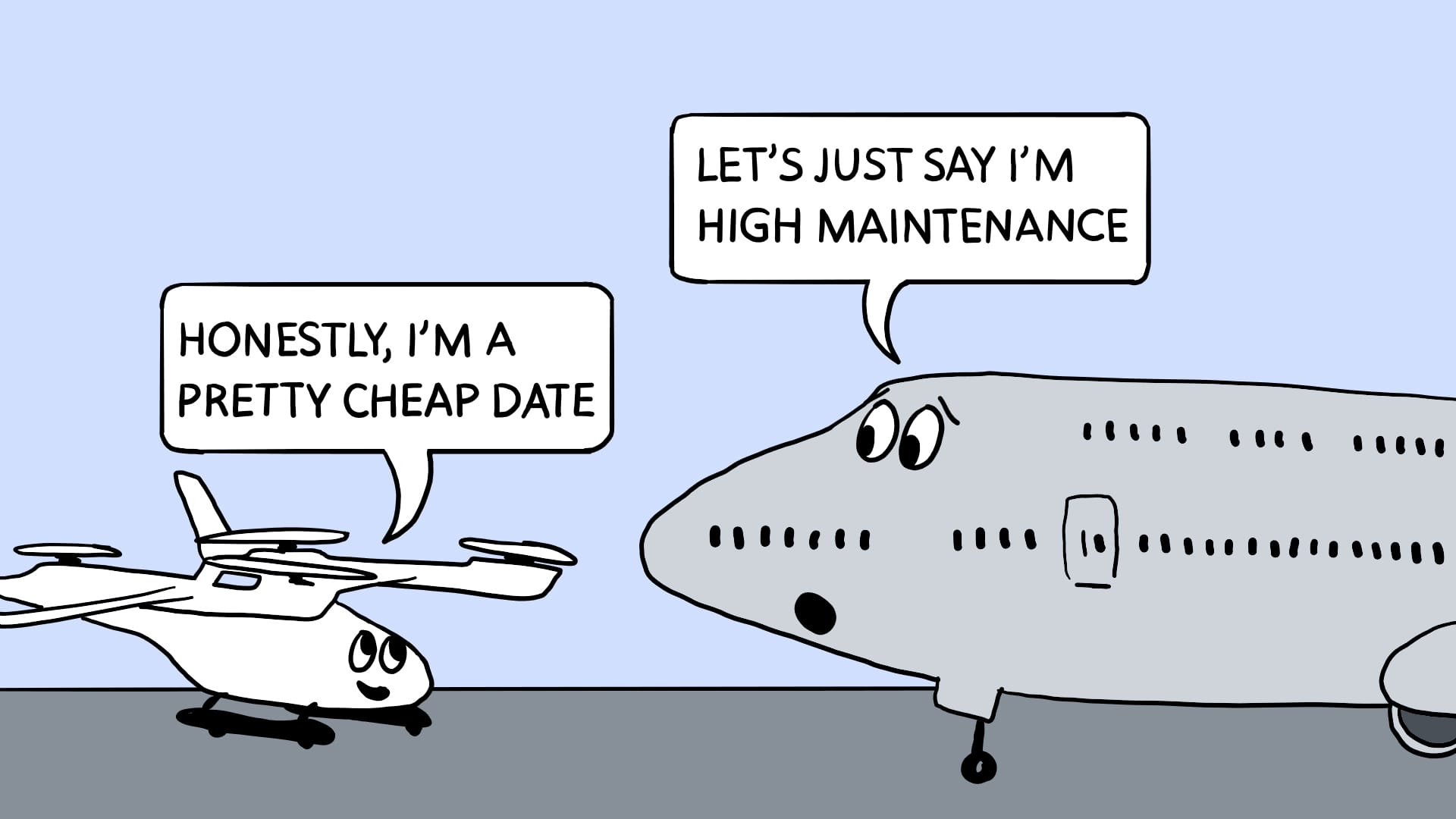
Electric motors, meanwhile, operate at over 90% efficiency. That means 90%+ of the electricity you put into the engine becomes instant movement.
If you want to go for a two-hour flight in a Beta plane, it'll run you about $17 worth of electricity. Whereas a comparably sized gas plane will use about $700 worth of fuel.
Just fueling up accounts for around ~30% of the cost to fly a gas-powered plane. And while fuel costs aren't directly priced into the cost of a plane ticket, when gas is more expensive, plane ticket prices go up.
Electric motors = less upkeep
Another place you'll find savings: maintenance. Maintenance for just about anything electric is going to be way cheaper than the gasoline version. Electric engines, whether in an airplane or a car, are far less complicated than internal combustion engines. They quite literally have fewer parts, which means less stuff that can break.
Though not exactly the same as plane engines, electric car engines use around 20 moving parts. ICE cars, meanwhile, comprise about 2,000 moving parts.

Maintaining electric engines over the course of their lifetime, per Kyle Clark, is about a third to a quarter the price of a gas engine.
Electric planes will only get better
This category is still so new. More innovation is coming soon: Beta just announced plans to build a 19-seat aircraft.
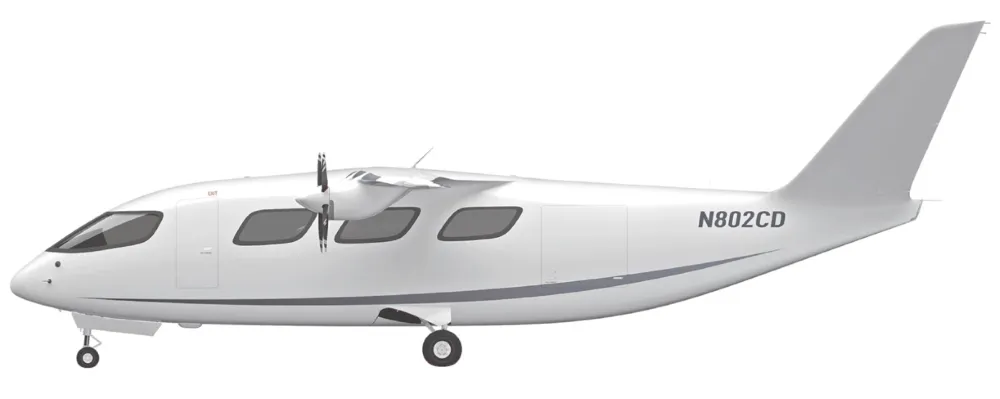
But even if they never changed a thing, Beta's aircraft would continue to increase the distance they can fly each and every year.
Why? Because batteries are get better and better all the time.
Batteries improve their energy density every year by around 7%. That percentage is compounding, which means your energy density doubles about once every 10 years.
Today, the longest Beta flight was about 380 miles on a single charge.
In a decade, even if nothing else improves, they should be able to fly for 760 miles. That's the distance from New York to Chicago.
And once it lands, Beta's aircraft can charge back up in just half an hour. Not much of a layover, but that's okay. The pilot's gonna want to punch the throttle again ASAP.
Beta is leading the charge (pun) on electric aviation. But they're not alone. Next week, we'll round out our coverage of e-viation with a look at the other players in the aerospace. Plus, we'll talk about why Beta's biggest customer is none other than the newly christened Department of War.
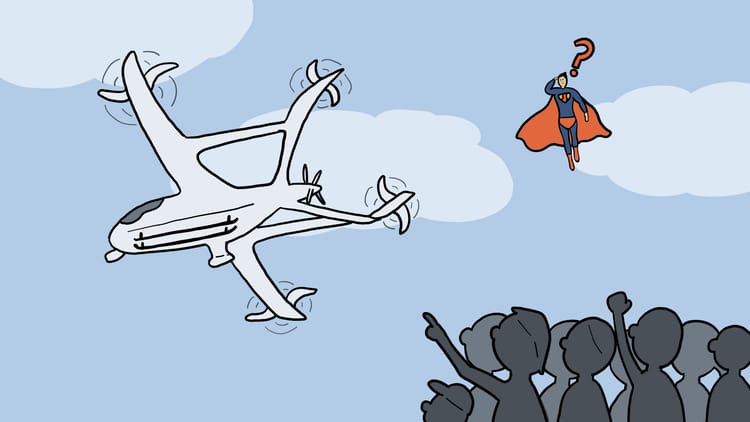

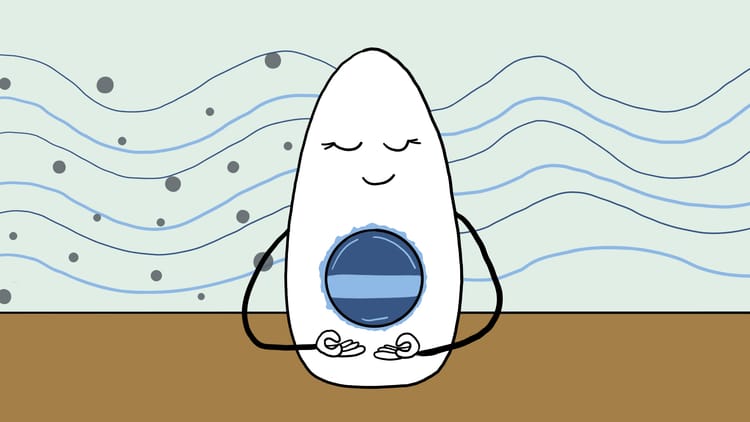

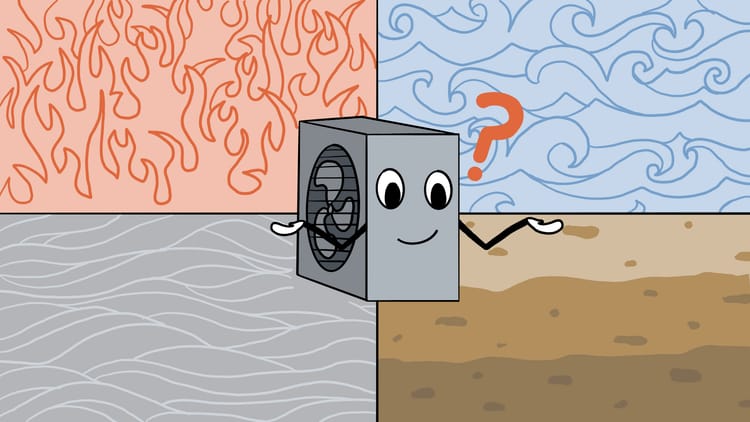
Member discussion